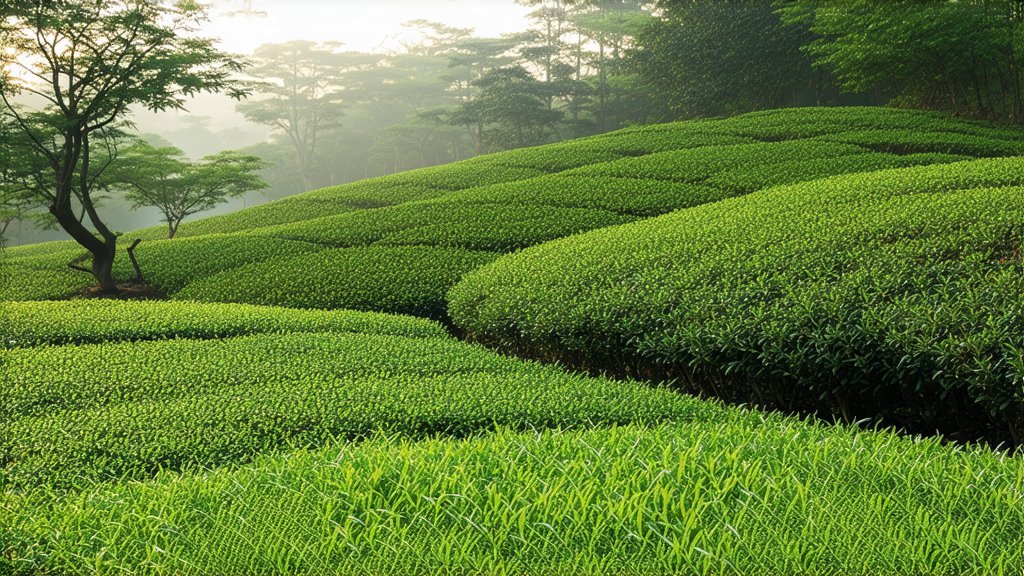
Bai Mudan, also known as "White Peony," is a revered variety within the realm of Chinese white teas, celebrated for its subtle elegance and intricate flavor profile. Originating from the Fujian Province, this tea has a history that spans several centuries, embodying the essence of traditional Chinese tea culture.
Historical Background
The origins of Bai Mudan can be traced back to the early Qing Dynasty (1644-1912). It was during this period that the production techniques for white tea were perfected in Fujian, particularly in the regions of Fuding and Zhenghe. Bai Mudan, meaning "White Peony" in Mandarin, was named after the white downy hairs that cover its young shoots and leaves, reminiscent of the delicate petals of a peony flower. This tea quickly gained popularity among the imperial courts and literati for its refined taste and health benefits.
Variety and Characteristics
Bai Mudan belongs to the category of lightly oxidized teas, which means it undergoes minimal processing to preserve its natural characteristics. Unlike other teas that are plucked, rolled, and oxidized extensively, white tea is simply withered and dried. This preservation of its natural state results in a tea that is light in color and flavor, yet rich in antioxidants and nutrients.
The appearance of Bai Mudan is characterized by its silvery-white down, which gives it a unique aesthetic appeal. When brewed, the tea produces a pale yellow liquor that is both aromatic and flavorful. The taste profile of Bai Mudan is complex, featuring notes of sweetness, floral hints, and a slight vegetal undertone. These nuances make it a favorite among tea connoisseurs who appreciate the subtleties of fine tea.
Production Process
The production of Bai Mudan involves several meticulous steps to ensure the highest quality. The process begins with the careful selection of tea leaves, typically采摘d in early spring when the buds and youngest leaves are most tender. Only the top two leaves and bud are chosen, ensuring that each piece contains the optimal balance of flavors and nutrients.
Once harvested, the leaves are spread out to wither naturally under the sun or in a shaded, well-ventilated area. This withering process allows the leaves to lose moisture gradually, enhancing their natural sweetness and aroma. After withering, the leaves are gently dried, either by sun exposure or in specialized drying ovens. The final step involves a light roasting to stabilize the tea and prepare it for storage and packaging.
Tasting and Appreciation
Tasting Bai Mudan is an experience that requires attention to detail and a discerning palate. To fully appreciate this exquisite tea, follow these steps:
-
Preparation: Use a clear glass or porcelain teapot to observe the tea's unfurling beauty. Rinse the pot with hot water to warm it up.
-
Measurement: Take approximately 3-5 grams of Bai Mudan per 200 ml of water. Adjust according to personal preference.
-
Water Temperature: Use water heated to about 80-85°C (176-185°F). Boiling water can scald the delicate leaves, resulting in a bitter taste.
-
Steeping: Infuse the tea for 2-3 minutes. Bai Mudan can be steeped multiple times, with each infusion revealing different layers of flavor.
-
Observation: Admire the graceful dance of the leaves as they unfurl in the water. Notice the pale yellow hue of the liquor and the subtle fragrance that rises with the steam.
-
Sipping: Take slow, deliberate sips to savor the tea's complexity. Pay attention to the initial sweetness, followed by the floral notes and the gentle finish.
Health Benefits
In addition to its delightful taste, Bai Mudan offers numerous health benefits. Rich in antioxidants such as catechins and polyphenols, this tea helps combat free radicals and supports overall well-being. It is also known for its anti-inflammatory properties, which can aid in reducing swelling and promoting skin health. Additionally, Bai Mudan contains fluoride, which contributes to dental health by strengthening teeth and preventing cavities.
Conclusion
Bai Mudan stands as a testament to the artistry and tradition of Chinese tea making. Its minimal processing and natural elegance make it a cherished variety among tea enthusiasts worldwide. Whether enjoyed for its delicate flavor, health benefits, or historical significance, Bai Mudan remains a timeless treasure in the world of tea.